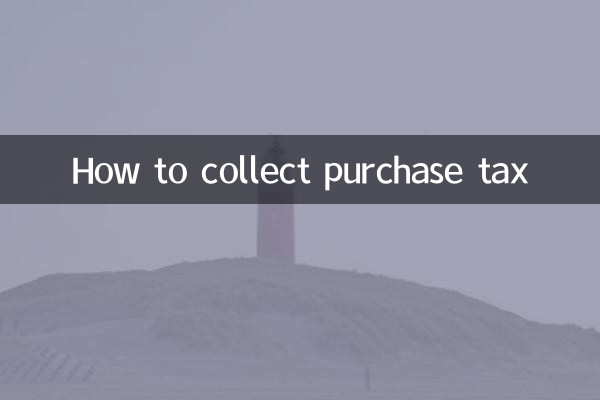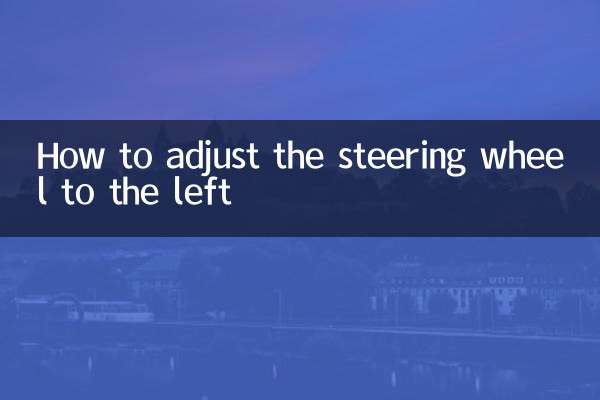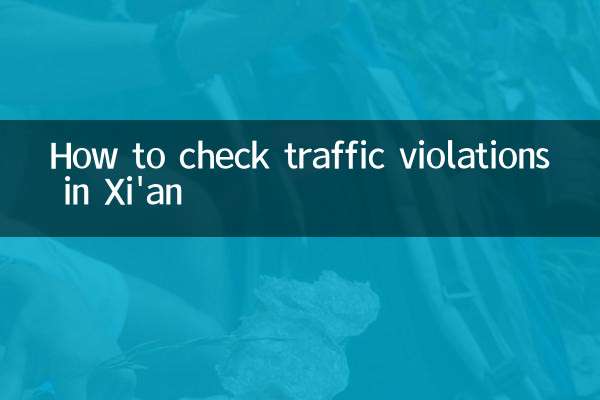How to collect purchase tax
Recently, the policies and calculation methods of purchase tax have become a hot topic again. With the popularity of new energy vehicles and the adjustment of preferential policies for fuel vehicles, many consumers have questions about the standards for collecting purchase tax. This article will introduce in detail the collection rules, calculation methods and latest policy developments of purchase tax to help you better understand this tax.
1. Basic concepts of purchase tax

Purchase tax is a tax levied on units and individuals who purchase taxable vehicles within the territory of the People's Republic of China. The scope of purchase tax collection includes cars, motorcycles, trams, trailers and agricultural transport vehicles. The tax rate and calculation method of purchase tax vary depending on vehicle type and policy adjustments.
2. Collection standards for purchase tax
According to current policies, the purchase tax collection standards are as follows:
| vehicle type | tax rate | Remark |
|---|---|---|
| Fuel vehicle | 10% | Calculated based on invoice price |
| New energy vehicles | exempt from tax | Valid until December 31, 2023 |
| used car | No collection | Only taxed on new cars |
3. Calculation method of purchase tax
The formula for calculating purchase tax is:Purchase tax = taxable price of taxable vehicle × tax rate. Among them, the taxable price is usually the invoice price of the vehicle, but does not include VAT. The specific calculation method is as follows:
| Taxable price | tax rate | Purchase tax amount |
|---|---|---|
| 200,000 yuan | 10% | 20,000 yuan |
| 300,000 yuan | 10% | 30,000 yuan |
| 500,000 yuan | 10% | 50,000 yuan |
4. Latest policy developments
Recently, policy adjustments on purchase tax have mainly focused on the field of new energy vehicles. According to announcements issued by the Ministry of Finance and the State Administration of Taxation, the new energy vehicle purchase tax exemption policy will continue until December 31, 2023. This policy aims to encourage consumers to purchase new energy vehicles and promote green travel.
In addition, some local governments have also introduced local subsidy policies to further reduce consumers’ car purchase costs. For example, Beijing provides subsidies of up to 20,000 yuan for new energy vehicles, while Shanghai provides free license plates to qualified new energy vehicles.
5. Purchase tax payment process
The payment of purchase tax is usually completed before the vehicle is registered. The specific process is as follows:
| step | content |
|---|---|
| 1 | Get a car purchase invoice after purchasing a car |
| 2 | Bring invoices, ID cards and other materials to the tax authorities to declare |
| 3 | The tax authority determines the tax amount and issues a tax payment certificate |
| 4 | Complete vehicle registration procedures with tax payment certificate |
6. Frequently Asked Questions
1. Can the purchase tax be paid in installments?
Purchase tax usually needs to be paid in one lump sum, and installments are not supported. However, some financial institutions provide car loan services that can cover the purchase tax fee.
2. Will the policy of exempting new energy vehicles from purchase tax continue?
The current policy deadline is December 31, 2023, and whether it will be extended will need to wait for official notification.
3. How to calculate the purchase tax for imported cars?
The taxable price of imported cars is the duty-paid price plus customs duties and consumption tax, and the tax rate is still 10%.
7. Summary
As an important expense in the car purchase process, purchase tax directly affects consumers' car purchase costs. Understanding the collection standards, calculation methods and latest policies of purchase tax can help consumers make more informed car purchasing decisions. With the popularity of new energy vehicles and policy support, the purchase tax collection rules may be further adjusted in the future. Consumers are advised to pay close attention to relevant policy developments.

check the details

check the details